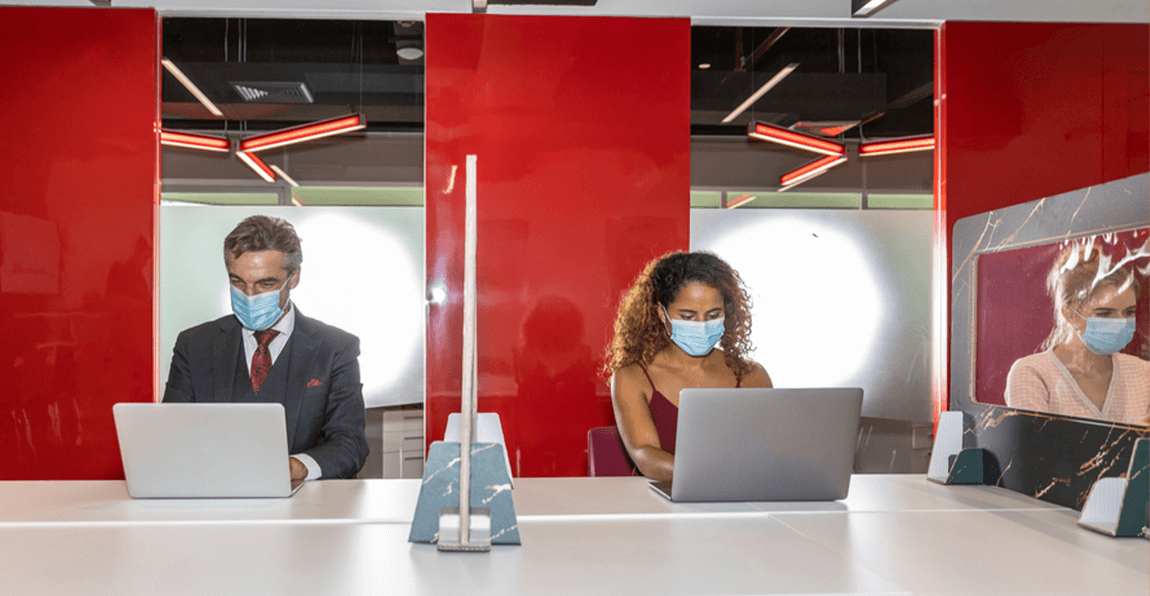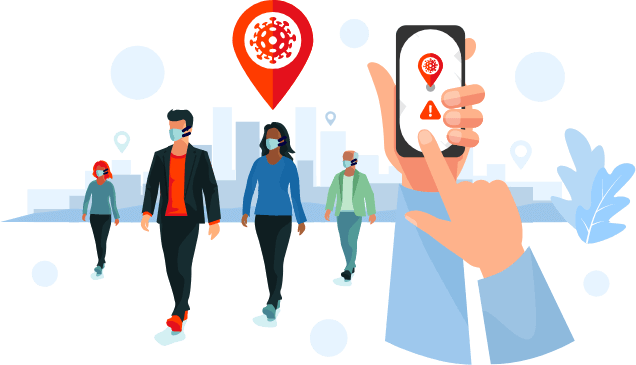
Return to Work: It’s Happening!
After working from home or not working for months, we have all heard the news about reopening certain businesses. Companies are getting ready to open their doors once again to the workforce and even some visitors. However, return to work can bring new problems with the good.
According to George Slover, senior policy counsel at Consumer Reports, “returning workers need to be absolutely confident that their employer is doing everything it reasonably can to protect them.” He said that workers should have the idea that their safety is the top priority of the company.
For this reason, organizations need to consider some aspects before allowing people to enter into their workspace. Here are some tips and tricks for innovative solutions to some of the #back2work problems.
Checklist: Top Return to Work Complications
- Follow Official Guidelines

One of the hardest things any organization needs to do is making its employees follow the official guidelines. Employers and employees should be aware of federal, state, and local orders about returning to work.
Moreover, the organization’s head needs to force its employees to follow the CDC and OSHA guidelines strictly. These rules and guidelines are specifically structured to keep people safe in the workforce environment.
- Assess Their Situation
Even when some industries have permission to resume their operation in offices, employers should independently assess if they are making the right decision. Just because we can go back, is it safe?
Employers in all industries need to consider the risks and problems they might have to face, like maintaining social distancing. If they think they don’t have enough space to accommodate all the employees and maintain distance between them, they need to reconsider and reorganize.
- Maintaining Screening Practices
Another problem organizations can face is ensuring screening practices. It’s important to consider different screening options of employees and visitors before entering the office, such as temperature checks and general wellness screenings.
- Ensure Employee Privacy
It is also important to think about your employee’s privacy. Make sure that any collected medical data is kept secure, and only seen on a need-to-know basis by decision makers.
- Managing Social Distancing

The biggest problem when returning to work is maintaining social distancing, no matter what kind of workplace you have. Forcing your employees to maintain distance and keeping eyes on them can be stressful. Helping them remember the distance with floor markings, or a little creative re-arranging of common work areas can help keep them safe and helps maintain order.
Ask your employees to keep at least six feet distance from each other, and in situations where they can’t, try to find a better solution.
- Notifying Potential Exposure
Make sure your employees feel safe letting HR and their superiors know if they think someone in the workplace may be showing symptoms of the virus. This is the best thing you can do to protect your employees in the workplace. Build a trustable relationship with each employee and ask them to notify potential exposure near them. Always make sure that they don’t feel at risk of their jobs for being honest with you about their concerns regarding office or community spread. Open communication is the best key to making sure this all works well. Make sure your employees also feel safe asking for time off or to work from home, if possible when they feel ill.
Normalization of Return to Work: One Step at a Time
However, many employers may feel stressed to open the doors of their companies while abiding by the various laws and regulations. Obviously, it will be difficult to do everything at once. This is why it’s best to take one step at a time to normalize return to work. Consider opening in smaller phases, maybe only a few critical departments at a time, to see how the new guidelines work for your business and company culture. As you get a feel for what your people respond to, consider breaking up who is in the office on certain days.
From Manufacturers to Hospitals: Effective Return to Work Solutions
- Manage Employee Numbers
Allowing large groups of employees to return to work, especially in a shared workplace, can be a huge risk and may lead to the spread of the virus. Managing the number of workers is important to ensure workplace health; the higher the number of employees, the higher the risk.
Plan a strategy for the reintroduction of the office. You can change the shifts of employees. Half of the employees can work in the morning, and the other half can work at night. Or you can ask employees to come to the office on alternate days. This may slow down your organization’s operations, but it will keep you and your employees safe. Make sure to talk with your teams, and see what would make them feel the most efficient, and if you are alternating teams, ensure that there is plenty of time between groups for disinfecting and heading home before the next group comes in, to avoid cross contamination between teams.
- Rethink Physical Setup

To maintain social distancing, you need to keep six feet distance between all the employees. This can only happen in bigger offices. This is why businesses need to revamp their office spaces. Even the cafeterias need to be big enough to make the sitting arrangement considering the distancing rule.
- Rebuild Employees Morale
It may be stressful for some staff members to return to the workplace after weeks or months. As they were doing work remotely, their way of working may have changed. Moreover, a recent survey found that 41% of employees expressed concern about going back to work – a problem which the employer needs to resolve.
Also, some of their teammates may decide to quit the job and not return. This is why employers need to boost their staff’s morale so that they can be productive.
- Review of Infrastructure Requirements
Most businesses may not be the same after return to work, as they were before the pandemic. This means they will need effective platforms to ensure employee connectivity, communication, and collaboration for business success. Every department should keep an eye on leakages in communication and technology infrastructure.
Many IT teams are investing in these areas to make a united workforce environment. A study on CIOs and senior tech executives shows that this investment makes 30% of the annual IT budget in several organizations.
Return to Work: What Else Should Essential Businesses Consider?
- Train Your Employees
If you train your employees and create the mindset that they can protect themselves, it will help you more. Organize a seminar to teach your employees about certain regulations issued by the government and the CDC. Spread awareness of how important it is to maintain hygiene and keep a distance from others. Make sure they know what tools and rules they have at their disposal, and how to use them. Make sure they know how to properly wear a mask, how to prevent spread with gloves, and how to cough or sneeze into their arms or a tissue
- Make Essential Safety Tools Available

Prohibit workers or visitors to enter the premises without wearing a mask. Make sure to have a few extra single-use masks on hand if you can get them in your area for people who forget. Plus, install hand sanitizer stations at a couple of places in your office, and remind your employees to sanitize their hands often, if they don’t have access to water and soap. Making supplies for proper safety and hygiene available, will make it more likely for your employees to use them to protect themselves, and therefore others.
- Notify Them Regularly
While many employees are adapting to the new normal, some people are still struggling. This is why they also forget and stop taking safety measures after some time. Notifying them regularly to be safe and follow precautions will help keep them and others healthy. You can do this with the help of digital solutions, such as People 1 Care that can help you send notifications to your workers’ mobile devices.
People1 Care: Your Next Digital Return to Work Solution

If you are wondering how you can manage all the aspects mentioned above on your own, don’t worry. People1 Care has solutions to your problem. It gives you a unified platform from where you can trace your workers movements to make sure they are following social distancing measures. This amazing tool allows you to operate it from your smartphone as well as desktop. Your employees can view the notifications and alerts in the apps’ notification bar.
The solution can also quickly tell you about any potential exposure or event on your company’s premises. The dashboard and reports, self-assessment, and training and compliance facilities of this solution eliminate or manage most of your concerns regarding the workspace. People1 Care is specifically structured in such a way that you can easily return to work without having to individually manage many of the problems that can come with returning to work.
Conclusion
While COVID-19 has become a new reality, some facilities have got the green flag to start their in-house operations. Return to work is a little difficult in these circumstances. However, by following the official guidelines by the CDC and caring for your employees with the help of People1 Care, you can resume your company’s operations safely and efficiently.
Discover how PeopleOne can transform your organization
Request a DemoHR and Comms Guide: How to Turn Your Intranet into a Highly Engaged and Productive Platform
Download Ebook





